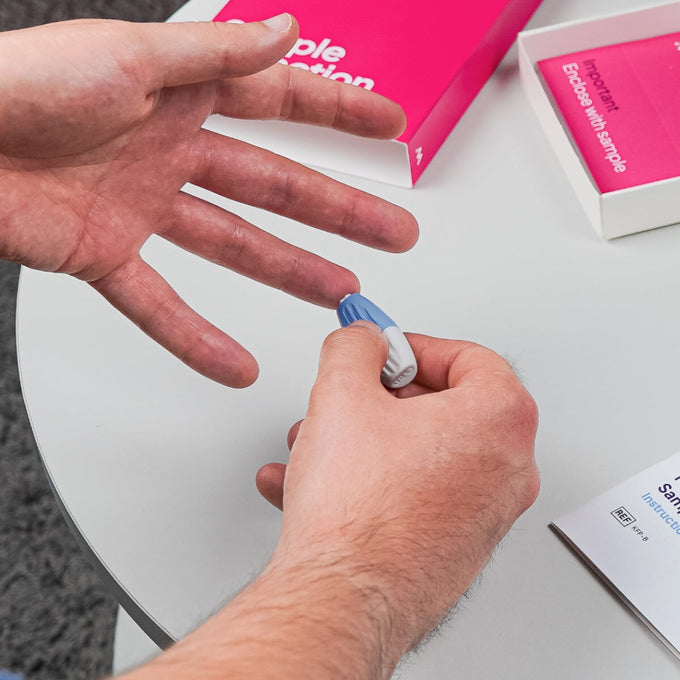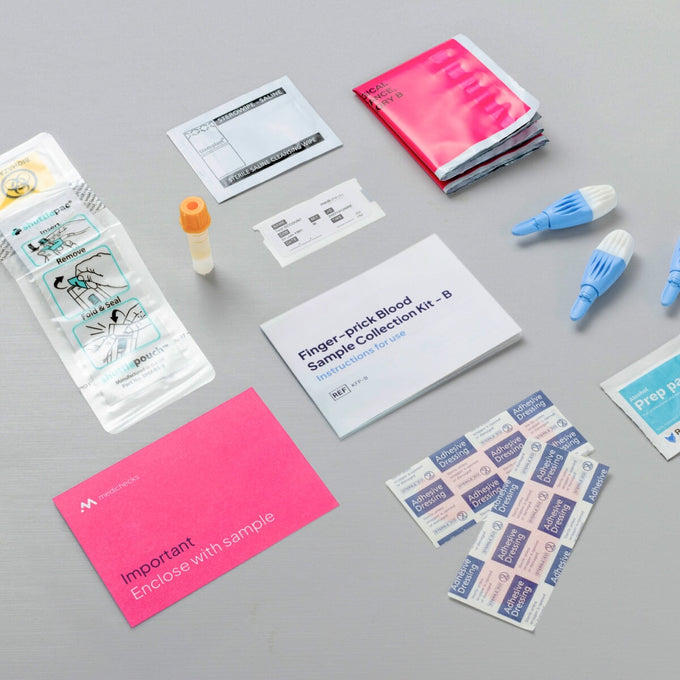Apolipoprotein Profile Blood Test, from our experts to you.
Dr Sam Rodgers MBBS, MRCGPChief Medical Officer

What are apolipoproteins?
Apolipoproteins are proteins that help carry fats, such as cholesterol and triglycerides, around your body for use in your tissues and cells.
There are various forms of apolipoproteins, and they play a vital role in balancing the levels of good and bad cholesterol in your body. Apolipoprotein A1 (or apoA1) forms part of good (HDL) cholesterol and helps remove excess cholesterol from your body. In contrast, apolipoprotein B (or apoB) combines with fats to form bad (non-HDL) cholesterol and encourages this to be taken up by your cells.
Too much bad cholesterol can cause fatty deposits (plaques) to form in your arteries. This process is known as atherosclerosis, a condition where the arteries narrow, reducing blood flow, and increasing your risk of heart disease or stroke.
What can I learn from an apolipoprotein blood test?
By measuring the levels of apolipoproteins in your blood, our test can give you a clearer picture of your risk of cardiovascular (heart and blood vessel) disease.
Traditionally, bad cholesterol levels have been used to assess heart disease risk. However, standard cholesterol tests may miss the build-up of small, dense particles of bad cholesterol in your blood. And as these particles are thought to significantly add to your heart disease risk, conventional cholesterol tests could underestimate your risk.
As each bad cholesterol particle, regardless of size or density, carries one apoB molecule, an apoB check can better reflect the number of potentially damaging particles in your blood. Coupling your apoB level with your protective apoA1 level in a ratio can also help determine your risk of heart disease.
Our test also checks standard markers for heart disease risk, including your levels of bad cholesterol. And if your apoB level is high, you will usually have similarly high levels of bad cholesterol. However, research has shown that if cholesterol and apoB results don’t agree with each other, apoB is the more accurate of the two at estimating your heart disease risk.
What causes a high apoB blood test result?
There are many reasons why your apoB level might be raised. These include lifestyle factors, such as a high-fat diet, being overweight, and a leading a sedentary lifestyle.
High levels of apoB can also be caused by underlying health conditions such as diabetes, an underactive thyroid (hypothyroidism), and chronic kidney disease (CKD).
Other reasons include being pregnant, which can temporarily cause a high apoB level, and some genetic disorders. The use of drugs like beta blockers and diuretics can also affect your apoB level.
What's Included?
How to prepare for your test
Special Instructions
Prepare for your Apolipoprotein Profile Blood Test by following these instructions. Do not eat for 12 hours prior to your test. Drink plenty of water, if you take medication then you are allowed to take it as you would normally.
Frequently asked questions
What is a normal apoB blood test result?
The normal range for apoB varies depending on the ranges used by the lab processing your results, but generally, it’s <1 g/L for apolipoprotein B.
What happens if my apoB test result is high?
Having a high apoB level doesn’t cause any obvious symptoms. Most people with high apoB levels don’t find out they have it until they develop a serious health condition, such as a heart attack or stroke.
As you can have a high apoB level without knowing, you may wish to monitor your level or repeat your apolipoprotein test following lifestyle changes. Alternatively, your doctor may advise monitoring your cholesterol levels.
What can I do to lower my apoB level?
Making changes to your lifestyle such as taking regular exercise and following a heart-healthy diet, such as the Mediterranean diet, can help to lower your apoB level. And this can help decrease your risk of heart disease.
Controlling any underlying medical conditions that could contribute to a raised apoB level, such as diabetes and hypothyroidism, can also help to get your level into the normal range.
In some cases, you may be prescribed medication. Your GP will be able to offer advice and guidance if your apoB level is outside the normal range.
What does a low apoB test result mean?
A low apoB test result could be due to an underlying health condition such as an overactive thyroid (hyperthyroidism) or advanced liver disease. Malnutrition, severe illness, or medications (like thyroxine or statins) can also contribute to lower levels of apoB. Very rarely, genetic conditions, such as apolipoprotein B deficiency or Bassen-Kornzweig syndrome, may cause abnormally low levels of apoB.




